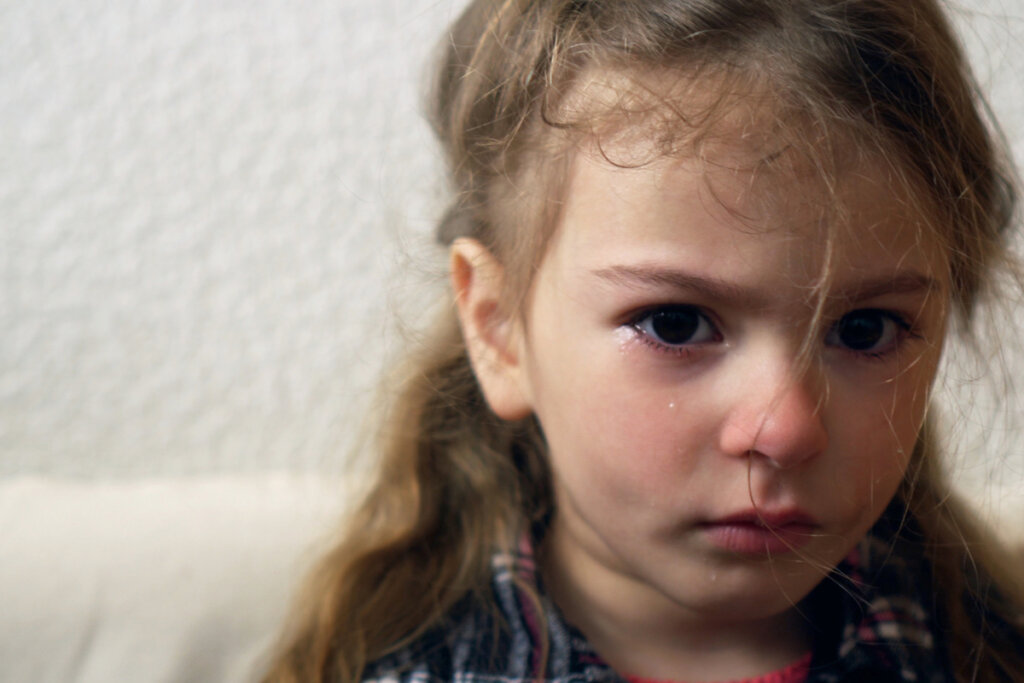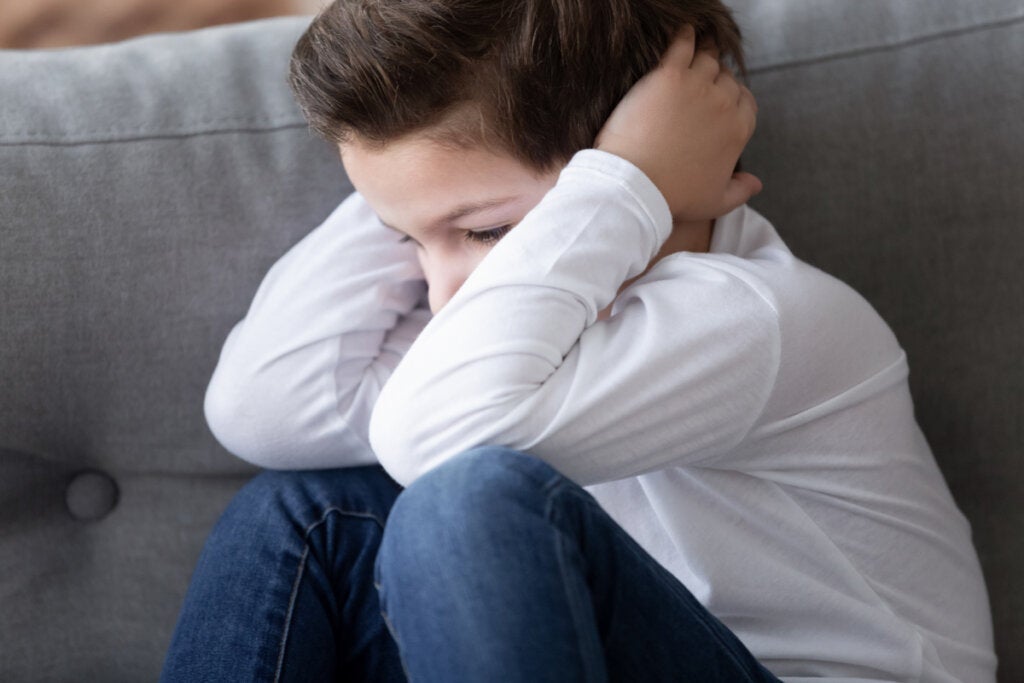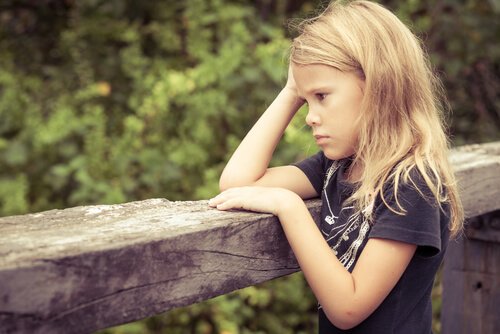Anxiety is defined as a state of internal tension, restlessness, and disturbance of mood. It also implies anguish and a feeling of loss of control. We all suffer from anxiety at some point in our lives. However, how does anxiety in children manifest itself? Furthermore, why does it happen? Let’s find out.
Anxiety disorder versus anxiety
The Centers for Disease Control and Prevention (CDC) (USA) states that when children don’t overcome the fears and worries typical of their age, they can find themselves facing an anxiety disorder. Anxiety also occurs when specific fears and worries interfere with their daily activities or well-being.
However, an anxiety disorder isn’t the same as anxiety in general. An anxiety disorder consists of a set of predetermined symptoms, which follow a pattern and cause significant discomfort. Furthermore, they’re of a certain duration and require specific intervention.
On the other hand, anxiety is a more generic term. It can often originate from a specific cause or might be due to specific circumstances or normative elements characteristic of a certain life stage. For example, in the case of children, it could be the start of school. An anxiety disorder is usually more serious than suffering from anxiety in general.
Common Anxiety Symptoms in Children
The common symptoms of anxiety in children are similar to those experienced by adults. However, they may vary in the way in which they manifest themselves and how the child experiences them.
For example, anxiety in children may translate into uncontrolled crying. This is because they don’t know how to manage it. There also might be setbacks in their development, decreased school performance, and new fears, etc.
However, what are the most common symptoms of anxiety in children? In addition, how do children manifest them? Let’s take a look.
Difficulty breathing
The child may experience difficulties when breathing. In fact, they find it hard to pause or slow down their breathing.
Consequently, their breathing becomes faster and somewhat labored. Some children may also hyperventilate, or become dizzy.
Stomach ache
Another common anxiety symptom in children is stomach pain. It’s worth remembering that there are a number of nerve endings in the stomach. Therefore, when you suffer from nerves, your stomach suffers too.
Concentration difficulties
Anxiety not only affects the physical area of the body, but also the cognitive one. Therefore, children with anxiety can experience alterations in their concentration. This means it becomes more difficult for them to focus and might negatively affect their ability to assimilate new knowledge. This, in turn, will manifest itself in their school performance.
With regard to this last point, Jadue conducted a study in 2001. It was published in Pedagogical Studies. Jadue stated there are some characteristics of the school system that can cause or intensify anxiety in children. These factors would consequently increase the number of students at risk of poor performance and failure in school.
Excessive worry
Another symptom of anxiety in children is excessive worry. This is more prevalent in children who ask a great deal of themselves. Children who tend to be perfectionists.
Changes in self-esteem
Due to anxiety, or rather, to its mismanagement, alterations to self-esteem (poor or low self-esteem) can also arise. For example, a child who suffers from panic attacks and who doesn’t understand why might think that something strange is happening to them. They might even think that there’s something odd about them.
Muscle tension
Muscle tension is another anxiety symptom in children. In these cases, the muscles seize and tense up.
Dizziness
Dizziness is also a symptom of anxiety in childhood. When the child can’t breathe well, their brain suffers an oxygen deficit, which causes dizziness.
Sensitivity or irritability
Increased sensitivity (which can lead to irritability) can also be another common anxiety symptom in children. As a matter of fact, they can get angry or cry about anything and they often struggle to control their emotions.

Causes of anxiety in childhood
The causes of anxiety in children, as in adults, can be multiple. Here are some:
- Beginning of schooling.
- Being bullied.
- Personality type or temperament.
- Living in violent situations at home.
- Having suffered abuse.
- Parental divorce.
- Significant losses (for example, the death of a pet or a loved one.).
- Change of city or school.
The importance of helping the child express himself
As we’ve seen, common symptoms of anxiety in children include those that are physical (eg, muscle tension), psychological (low self-esteem), and cognitive (concentration difficulties). It’s important to help children express these symptoms. That’s because, in childhood, they’re not always easy to detect.
Consulting with a child psychologist is always the best measure to take in these cases. Indeed, there’s nobody better to assess the importance of what’s happening and to suggest appropriate measures to take to reduce the child’s anxiety levels.
The post Eight Common Symptoms of Anxiety in Children appeared first on Exploring your mind.



















Comments